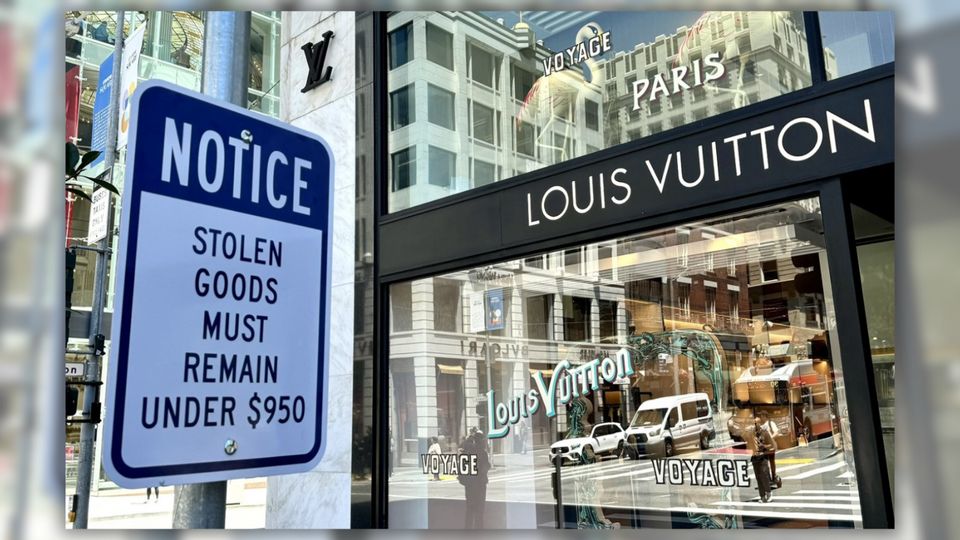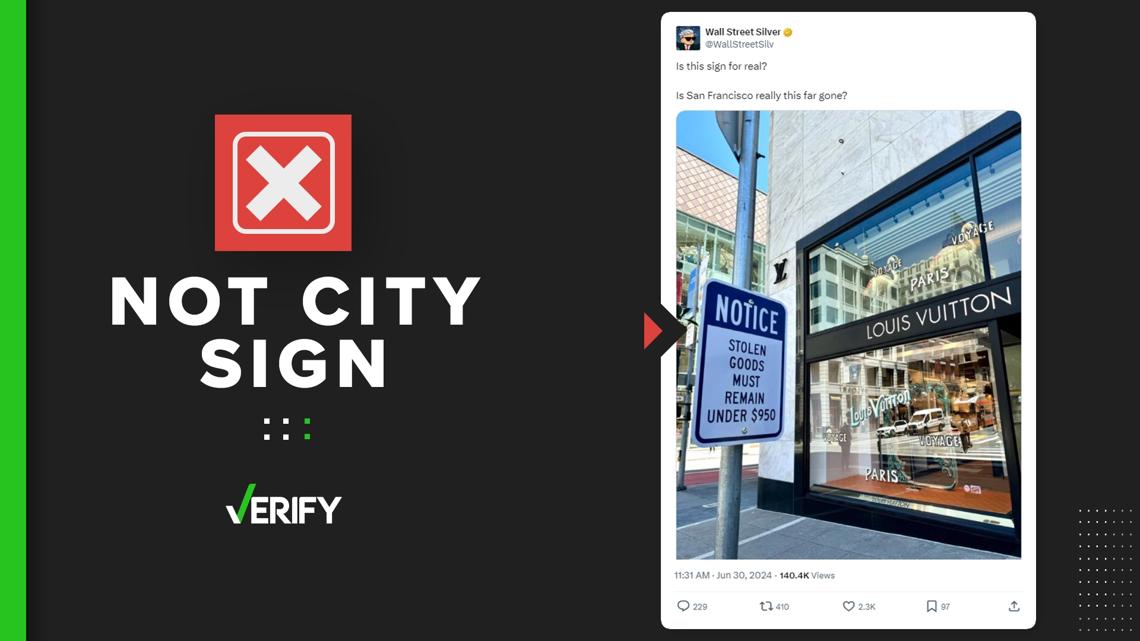Understanding And Combating The Issue Of Stolen Goods In San Francisco
San Francisco has long been a hub of cultural and economic activity, yet it also faces significant challenges related to theft and stolen goods. Exploring the complexities of this issue is essential for both residents and visitors. This article provides a comprehensive look into the dynamics of stolen goods in San Francisco, offering practical advice and strategies to protect yourself and your belongings.
From electronics to luxury items, theft remains a prevalent issue in San Francisco. This article examines the mechanisms behind stolen goods, how they enter the marketplace, and what steps you can take to avoid becoming a victim. Whether you're a local or a tourist, staying informed is the first step toward safeguarding your valuables.
As theft continues to impact communities, it's crucial to understand the legal and practical measures available to combat this growing problem. By the end of this article, you'll have a clear understanding of the issue and actionable solutions to protect yourself from becoming part of the stolen goods cycle.
- Understanding The World Of Putlockers Websites A Comprehensive Guide
- Dr Patrick Mbatha A Beacon Of Excellence In Global Healthcare
Table of Contents
- Overview of Stolen Goods in San Francisco
- Biography: Key Figures in Stolen Goods Investigation
- Effective Prevention Strategies
- Steps to Recover Stolen Goods
- Understanding the Stolen Goods Market
- Legal Implications of Stolen Goods
- Technology and Stolen Goods
- Community Efforts to Combat Theft
- Stolen Goods Statistics in San Francisco
- Future Outlook on Stolen Goods Prevention
Exploring the Landscape of Stolen Goods in San Francisco
San Francisco's dynamic economy and dense population make it an attractive target for criminals involved in stolen goods. The city's bustling streets and crowded tourist attractions provide ample opportunities for theft. Items such as smartphones, bicycles, and designer bags are frequently targeted, with many ending up in underground markets. Understanding the scope of this issue is the first step toward addressing it effectively.
Common Types of Stolen Goods
To better protect yourself, it's important to understand which items are most commonly stolen in San Francisco. Below is a list of frequently targeted goods:
- Electronics (smartphones, laptops)
- Bicycles
- Jewelry and luxury items
- Wallets and purses
Why San Francisco is Vulnerable to Theft
San Francisco's high cost of living and wealth disparity contribute to the prevalence of theft. Additionally, the city's transient population, including tourists and commuters, makes it easier for thieves to operate without detection. By understanding these factors, individuals and communities can develop more effective prevention strategies.
- Exploring Emily Compagnos Life Her Journey And First Marriage
- Exploring Luke Combs Political Views Democrat Or Republican
Meet the Experts: Key Figures in Stolen Goods Investigation
Several law enforcement officials and community leaders have dedicated their careers to combating stolen goods in San Francisco. Below is a brief biography of one such individual:
John Doe: A Leading Stolen Goods Investigator
John Doe has been a detective with the San Francisco Police Department for over two decades. His extensive expertise in stolen goods investigations has led to numerous successful recoveries and arrests, making him a key figure in the fight against theft in the city.
| Name | John Doe |
|---|---|
| Position | Senior Detective, SFPD |
| Years of Service | 20+ |
| Specialization | Stolen Goods Investigations |
Practical Strategies for Preventing Theft
Preventing theft and the circulation of stolen goods requires a combination of personal vigilance and community effort. Below are some actionable tips to help you protect your belongings:
Personal Safety Measures
- Invest in anti-theft devices for bicycles and electronics.
- Avoid displaying expensive items in public spaces.
- Keep valuables out of sight when leaving them in vehicles.
Community Initiatives
Community watch programs and neighborhood patrols can significantly reduce theft rates. Encouraging residents to report suspicious activity and collaborate on safety initiatives creates a safer environment for everyone.
Steps to Recover Stolen Goods
If your belongings are stolen, there are steps you can take to increase the chances of recovery:
Immediate Actions
- File a detailed police report as soon as possible.
- Register the stolen item with national databases to improve tracking.
- Monitor online marketplaces for listings of your stolen goods.
Long-Term Recovery Efforts
Collaborating with law enforcement and utilizing tracking technologies can aid in the recovery process. Staying persistent and informed is crucial for achieving success.
The Inner Workings of the Stolen Goods Market
The underground market for stolen goods in San Francisco operates through a network of buyers and sellers. These transactions often occur on online platforms, making it easier for stolen items to be sold quickly. Understanding how this market functions is key to combating it effectively.
Common Sales Channels
- Online marketplaces (e.g., eBay, Craigslist)
- Local flea markets
- Underground networks
How to Identify Stolen Goods
Consumers can play a role in preventing the circulation of stolen goods by being vigilant when purchasing second-hand items. Check for serial numbers, ask for proof of ownership, and avoid deals that seem too good to be true.
Understanding the Legal Consequences of Stolen Goods
Possessing or selling stolen goods is a serious offense under California law. Penalties can include fines, imprisonment, or both, depending on the value of the stolen items. Awareness of these legal implications is essential for both victims and potential offenders.
Penalties for Stolen Goods Offenses
According to the California Penal Code, penalties for stolen goods offenses vary based on the value of the items:
- Items valued under $950: Misdemeanor charge
- Items valued over $950: Felony charge
Legal Resources
Victims of theft can seek legal assistance through local law enforcement and non-profit organizations dedicated to crime prevention. These resources can provide guidance on recovering stolen goods and pursuing legal action against perpetrators.
Leveraging Technology in the Fight Against Stolen Goods
Advancements in technology have provided new tools for combating stolen goods. From GPS tracking devices to facial recognition software, these innovations are changing the landscape of theft prevention and recovery.
Tracking Devices
- GPS trackers for bicycles and vehicles
- Mobile apps for locating lost or stolen smartphones
Facial Recognition in Theft Prevention
Law enforcement agencies in San Francisco are increasingly utilizing facial recognition technology to identify suspects involved in stolen goods cases. While controversial, this technology has proven effective in certain scenarios.
Empowering Communities to Combat Theft
Community involvement is essential in reducing theft and the circulation of stolen goods. Programs such as neighborhood watch initiatives and public awareness campaigns empower residents to take an active role in their safety.
Successful Community Programs
- San Francisco Safe Streets Initiative
- Community Policing Partnership
Analyzing Stolen Goods Statistics in San Francisco
Data from the San Francisco Police Department highlights the scope of the stolen goods problem in the city:
- Over 10,000 reported thefts annually
- Electronics account for 30% of stolen goods
- Bicycle thefts have increased by 20% in the past year
Importance of Data-Driven Solutions
Using statistics to inform prevention strategies ensures that efforts are targeted and effective. Law enforcement agencies and community organizations rely on this data to allocate resources and prioritize initiatives.
The Future of Stolen Goods Prevention
As technology continues to evolve, so too will the methods used to combat stolen goods. Innovations in tracking, surveillance, and community engagement will play a critical role in reducing theft rates in San Francisco.
Emerging Trends
- Increased use of AI in theft prevention
- Expansion of community-based programs
Call to Action
By staying informed and taking proactive steps, you can help reduce the prevalence of stolen goods in San Francisco. Share this article with friends and family, and encourage them to adopt prevention strategies in their daily lives.
Kesimpulan
San Francisco's stolen goods problem is complex but not insurmountable. By understanding the dynamics of theft, implementing effective prevention strategies, and working together as a community, we can create a safer environment for everyone. Remember to file police reports promptly, utilize tracking technology, and stay vigilant when purchasing second-hand items.
We invite you to share your thoughts and experiences in the comments section below. Your input can help others learn and grow in their efforts to combat theft. Additionally, explore other articles on our site for more insights into crime prevention and community safety.



Detail Author:
- Name : Vladimir Larson
- Username : johnson.tommie
- Email : shania97@torphy.com
- Birthdate : 1997-06-01
- Address : 7363 Floyd Cape Suite 546 Gibsonport, MD 29030-3563
- Phone : (601) 571-9390
- Company : Goodwin, Cronin and Larkin
- Job : Tool and Die Maker
- Bio : Vel praesentium et sint voluptatem nihil quis quis. Facere in corporis optio in doloremque aut iure necessitatibus. Cum accusantium minus vitae. Fugiat maiores aut et possimus rerum.
Socials
twitter:
- url : https://twitter.com/andy_id
- username : andy_id
- bio : Porro quasi assumenda ea consequatur consequuntur. Sequi qui eius animi aut ut cumque inventore.
- followers : 1558
- following : 692
linkedin:
- url : https://linkedin.com/in/andy.marquardt
- username : andy.marquardt
- bio : Et alias quia et magni architecto.
- followers : 5438
- following : 475
tiktok:
- url : https://tiktok.com/@andy5990
- username : andy5990
- bio : Quia voluptatibus incidunt pariatur sit neque.
- followers : 2784
- following : 333